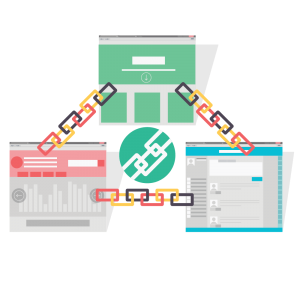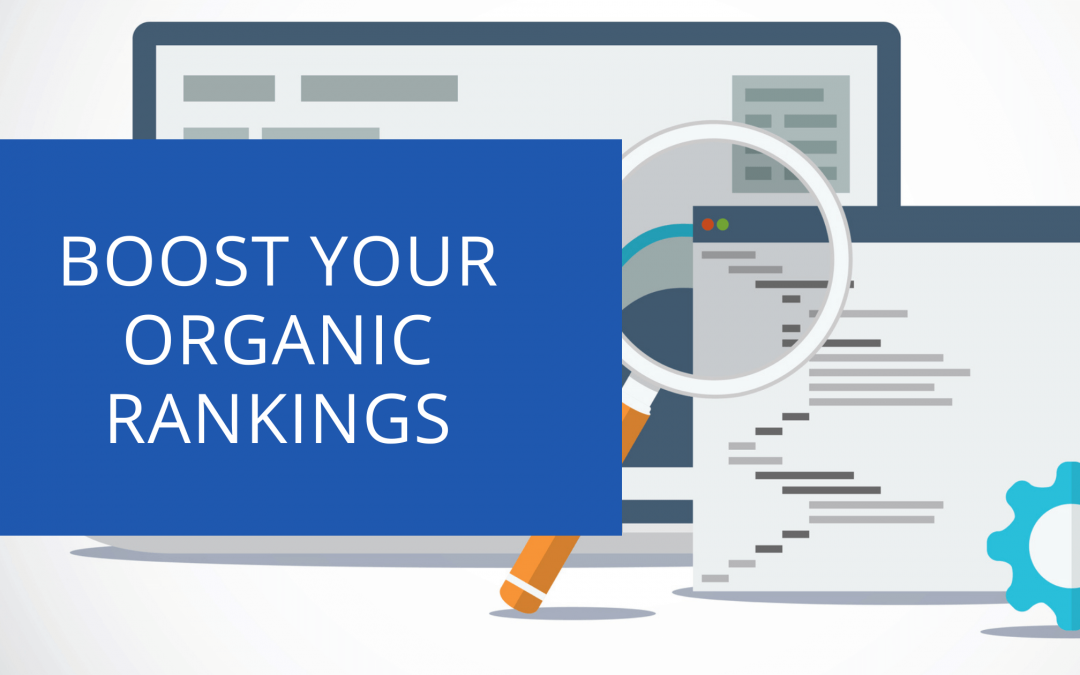SEO is the process of improving your website’s visibility on search engines. It can be done through many methods, including keyword research, content creation, link building, and site optimisation.
This article will discuss how to improve organic rankings by implementing 13 SEO techniques that are proven to work!
Contents
1. Identify the keywords you want to rank for
Identify the keywords you want to rank for. Doing so will help you choose which content to create, who it should be aimed at, and how often you’ll publish new material on your blog. You can use tools like Google Keyword Planner to find relevant keyword ideas based on search volume data compiled by Google’s algorithms.
 Additionally, market-specific forums are a gold mine when it comes to finding low competition long-tail terms that could potentially boost organic rankings!
Additionally, market-specific forums are a gold mine when it comes to finding low competition long-tail terms that could potentially boost organic rankings!
Once you have an idea about what people are searching for about your business or brand, write down some keywords from this list that seem most relevant and add them as headers throughout an article draft.
If possible try not to focus too much on picking just a few high-traffic keywords, but also think about including a variety of long-tail phrases that could still bring in relevant traffic.
When it comes to on-page optimisation for SEO purposes, using your target keyword throughout the article is one way to help Google and other search engines understand what your post is about.
- Title
- Headings and subheadings
- Introductory sentence
- Concluding paragraph
Use keywords in your meta description and tags. The primary purpose of a meta description is to communicate the contents of a web page to search engines, which then serve it up as a preview when someone does a search for that topic or related terms on Google or another engine.
The idea here is not only to include the keyword you want to rank for within this section, but also to make sure it’s engaging enough so people will click through from the SERP (search engine results page).
Include your target phrase somewhere at least once per paragraph if possible. You can even go beyond one use per paragraph by placing important phrases near the beginning and end of each piece of content instead of mid-paragraph where might get missed more easily by readers.
Meta descriptions should be between 150-160 characters in length, and the title tag around 55 characters.
Google also gives extra weight to keywords that appear in the first 100 words of a page’s content, so try to include your target keyword near the beginning of your post!
3. Optimise your website content and structure around those keywords
Once you have targeted a couple of valuable phrases, it’s time to start considering how you can best optimise your web pages around them.
 One way to do this is by using the keyword in the title of the page, as well as in the heading and subheadings. You can also use it throughout the body of text, but don’t go overboard! Overuse can hurt your ranking potential since Google may see it as spammy behavior.
One way to do this is by using the keyword in the title of the page, as well as in the heading and subheadings. You can also use it throughout the body of text, but don’t go overboard! Overuse can hurt your ranking potential since Google may see it as spammy behavior.
You can then write what is known as supporting content to link to your other posts or money pages to pass relevance and authority to them.
Another important aspect of on-page SEO is ensuring that your site is easy to navigate for both humans and search engine crawlers. This includes organising your content into easily digestible chunks with descriptive filenames and using clear headings and subheadings.
If you’re using a content management system (CMS), make sure to check that your site is set up for SEO success. Plugins like Yoast SEO can help with this, as can reading the documentation provided by the CMS developer.
It’s also important to keep your website updated with fresh, new content regularly! This will not only help with organic rankings but could also bring in more traffic from people who are looking for timely information about your industry or topic.
4. Build links to your website from other high-quality websites
Link building is one of the most important but complicated aspects of SEO.
The idea behind it is to build high-quality, relevant links from other websites back to your content so that Google sees yours as having more authority and relevance in certain search queries. This means when users do a related search or click on your result in the SERP they can be confident that what you have written will answer their question better than any other page found through the engine.
 There are two main types of link building – offsite (where people create new hyperlinks pointing at your website) and onsite (which refers to making sure there are internal links between pages within your site). You’ll need both for maximum ranking potential!
There are two main types of link building – offsite (where people create new hyperlinks pointing at your website) and onsite (which refers to making sure there are internal links between pages within your site). You’ll need both for maximum ranking potential!
When it comes to offsite link building, there are many ways you can go about it. Some popular tactics include guest blogging (writing content for other people’s websites to link back to your own), email outreach (sending polite requests to website owners asking if they would be interested in including a link to your page), and social media promotion (sharing links to your content on Twitter, Facebook, etc).
The best way to get started with this is by finding high-quality websites within your niche that are already linking out to similar content. You can then reach out and see if they would be interested in adding a link to yours as well.
Onsite link building is all about making sure the internal structure of your website supports your SEO efforts. For example, you’ll need to make sure that the pages on your site are linked together in a way that makes sense – this includes using words within headings and subheadings to link back to other relevant posts or money pages.
Promotion is another crucial part of SEO.
In addition to building links from other websites, you can also use social media platforms like Facebook and Twitter as a way to promote your content and attract new backlinks.
You could run a competition or giveaway that encourages people to share it with their friends to enter, for example, or simply ask your followers what they think about the piece! When using this approach be sure not only link out but name drop too (so make sure users know where they’re linking).
You should also consider joining relevant LinkedIn groups and sharing your posts there whenever possible. This will help them receive more exposure which means more traffic – plus if those who read it decide to click through on any of the links you’ve included there’s a chance that they’ll end up linking to you too!
6. Monitor your website’s search engine rankings regularly
One of the best ways to know that you’re on the right track with SEO is by regularly checking your website’s search engine ranking positions.
You may want to do this daily, weekly, or monthly depending on how much traffic your site gets – just be sure not to overdo it too though! Rankings change constantly so if you check every day for example and something changes then you’ll spend hours trying to work out what went wrong rather than focusing on other areas where things are going well.
You can use tools like Google Search Console, SerpFox, or SEMrush to track your rankings.
7. Optimise your images
When you’re adding images to your website, be sure to optimise them for better search engine rankings.
 This means including keywords in the file name and ALT text, as well as making sure the size is appropriate. You can also use tools like TinyPNG to help reduce the file size without sacrificing quality.
This means including keywords in the file name and ALT text, as well as making sure the size is appropriate. You can also use tools like TinyPNG to help reduce the file size without sacrificing quality.
If you’re using WordPress, there are a number of plugins that can help with this too – such as WP Smush and EWWW Image Optimizer.
You should also consider hosting your images on a separate server (like Amazon SES) rather than on your own site so they load faster for users.
8. Create quality content
One of the most important things you can do for your SEO efforts is creating quality content that people want to link to.
This means making sure your posts are well-written, informative, and interesting – something that people will want to share with their friends.
If you can manage to do this consistently then you’ll be on the right track!
9. Improve your page load time and Core Web Vitals
Another thing you can do to improve your SEO is focus on improving your page load time and Core Web Vitals.
Page load time is how long it takes for a web page to fully load, including all the images and text. The faster the better! You can use tools like GTMetrix or Pingdom to check your website’s page speed and make improvements where necessary.
Core Web Vitals are a set of metrics that Google uses to determine the quality of a website – things like site loading speed, mobile friendliness, etc.
If you’re able to improve these two factors then you’ll be doing yourself a huge favour when it comes to ranking.
Be sure to use header tags to break up your articles into easily-digestible chunks as this will make it easier for users to read and also help with SEO as Google pays attention to the structure of a website when ranking it.
Formatting is another thing that can help improve the readability of your content – things like headings, lists, and blockquotes are all good ways to do this.
However, you should avoid using too much formatting as it can be distracting for users and also won’t help with your SEO efforts. Italics and bold text are fine to use sparingly, but underline text should be avoided altogether.
For example, you could use an unordered list for things like reasons or examples, or a numbered list for instructions. This will help both users and search engine bots understand what is on the page easier – which means better rankings!
Other HTML elements you can use include:
- Tables
- Blockquotes
- Code blocks
- Preformatted text
11. Create unique titles for each page
Another thing you can do to improve your SEO is create unique titles for each page on your website.
 This means including the keyword or phrase you’re targeting in the title, as well as making it catchy and interesting so people will want to click through. You can use tools like Yoast SEO to help with this.
This means including the keyword or phrase you’re targeting in the title, as well as making it catchy and interesting so people will want to click through. You can use tools like Yoast SEO to help with this.
Targeting the same keywords on different can have a negative effect known as keyword cannibalisation.
Keyword cannibalisation is when your website ranks for a target keyword but doesn’t show up because you’re also ranking for a very similar term. The result is that both pages are competing against each other so neither shows up in the search results.
12. Keep Track of the Visitors and Leads That SEO Is Producing
One of the most important things you can do for your SEO is tracking the visitors and leads it’s driving.
This means setting up goal tracking in Google Analytics and using UTM parameters on your links.
UTM parameters are a way to track information about how people are interacting with your website, including where they came from, what they did, and how long they stayed.
This is a great way to see where your visitors are coming from and which of your SEO efforts (like guest blogging) are working best so you can scale up those activities while cutting down on others that aren’t having any effect.
13. Update Content Regularly
Finally, one last thing you can do to get more organic traffic updates your content regularly.
This means adding new pages or blog posts that will remain relevant for at least a year and linking back to the old ones. That way, users who come across an old page in their search results won’t think you’ve abandoned it!
FAQ
What is the best way to improve my website’s speed?
You can use tools like GTMetrix or Pingdom to check your website’s page speed and make improvements where necessary.
Core Web Vitals are a set of metrics that Google uses to determine the quality of a website – things like Largest Contentful Paint (LCP), First Input Delay (FID) and Cumulative Layout Shift (CLS).
If you’re able to improve these factors then you’ll be doing yourself a huge favour when it comes to ranking.
How can I format my content for better readability?
Be sure to use header tags to break up your articles into easily-digestible chunks as this will make it easier for users to read and also help with SEO as Google pays attention to the structure of a website when ranking it.
 Things like headings, lists, and blockquotes are all good ways to do this. However, you should avoid using too much formatting as it can be distracting for users and also won’t help with your SEO efforts.
Things like headings, lists, and blockquotes are all good ways to do this. However, you should avoid using too much formatting as it can be distracting for users and also won’t help with your SEO efforts.
Italics or bold text are fine to use sparingly but underline text should be avoided altogether.
I’m not sure what my target keyword is, how can I find it?
You can use Google Adwords Keyword Planner to help you determine what keywords and phrases are being searched for the most. This tool will give you a list of related keywords and also tell you how often each one is being searched for.
You can then use this information to target the same keyword or phrase on your website but make sure that the content is different enough so that you’re not competing against yourself.
What are some common SEO mistakes that I should avoid?
Some of the most common SEO mistakes include not having enough content, duplicate content, using too many keywords, and building no or poor quality links.
We Offer SEO Services Nationwide
- Chester:https://mediakynect.co.uk/seo-chester/
- Wirral: https://mediakynect.co.uk/seo-wirral/
- Liverpool: https://mediakynect.co.uk/seo-liverpool/
- North Wales: https://mediakynect.co.uk/seo-north-wales/
- Wrexham: https://mediakynect.co.uk/seo-wrexham/
Conclusion
Google uses many metrics to rank websites, such as page speed and web vitals. If you’re able to improve these two factors then your rankings will increase!
There are lots of tools out there that can help with improving on-page SEO like Yoast SEO for title tags and headings
Organic traffic is important – it’s free, targeted, 100% better than PPC ads, and usually converts well once the user gets through the door.
Make sure you create unique titles for each page on your website using keywords or phrases in the title along with making it interesting so people want to click through.

